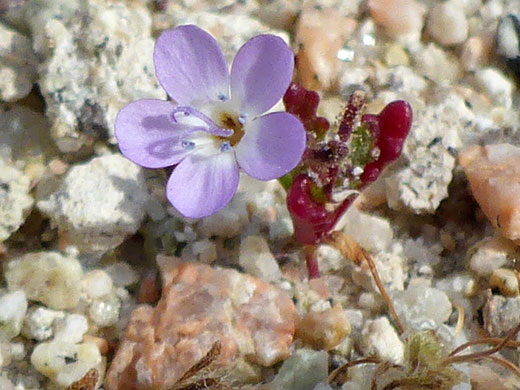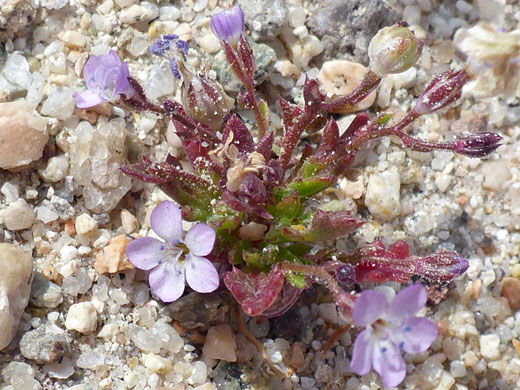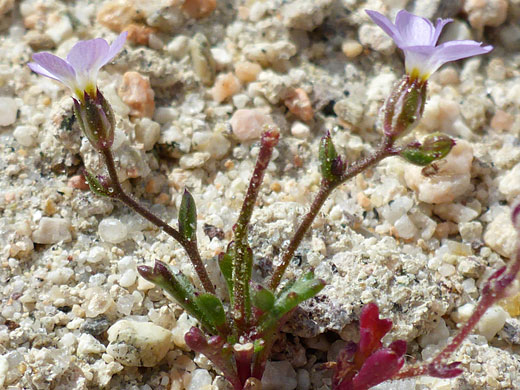
Five ovate, pink and white petals; gilia aliquanta, Hagen Canyon, Red Rock Canyon State Park, California
Common name:
Western gilia
Family:
Scientific name:
Gilia aliquanta
Main flower color:
Range:
South California and south Nevada
Height:
Between 3 and 6 inches
Habitat:
Washes and rocky hillsides in desert areas, from 2,000 to 5,000 feet
Leaves:
Thick, pinnately lobed, up to 1.2 inches long
Season:
March to May
Gilia aliquanta is similar to many low-growing, desert-inhabiting members of this genus; identifying features include the non-glandular calyx, the slightly exserted stamens and the non-clasping cauline leaves. Plants are just a few inches tall, branching a few times from the base, and the stems and leaves usually have a covering of glandular hairs. Most leaves grow at the base, forming a rosette, and tend to be angled upwards. Leaves are lobed most of the way to the midvein, and the lobes have a tiny point at the tip. Stems and leaves become red in times of drought.
Flowers are attached by stalks around 0.3 inches long. The calyx is generally hairless but may have a few woolly tufts; the lobes are usually purple, separated by thin, pale-colored membranes, appearing somewhat inflated. The base of the corolla tube, mostly contained within the calyx, is purple, while the throat is yellowish, often streaked with purple, and the lobes are pale pink or lavender. The corolla is about twice as long as the calyx. The style and stamens are exserted, projecting beyond the corolla throat.
There are two subspecies of gilia aliquanta: for ssp aliquanta the length of the corolla lobes is approximately equal to the corolla tube, while for the less common ssp breviloba the lobes are smaller, and about half the length of the tube.
Flowers are attached by stalks around 0.3 inches long. The calyx is generally hairless but may have a few woolly tufts; the lobes are usually purple, separated by thin, pale-colored membranes, appearing somewhat inflated. The base of the corolla tube, mostly contained within the calyx, is purple, while the throat is yellowish, often streaked with purple, and the lobes are pale pink or lavender. The corolla is about twice as long as the calyx. The style and stamens are exserted, projecting beyond the corolla throat.
There are two subspecies of gilia aliquanta: for ssp aliquanta the length of the corolla lobes is approximately equal to the corolla tube, while for the less common ssp breviloba the lobes are smaller, and about half the length of the tube.
All Contents © Copyright The American Southwest | Comments and Questions | Contribute | Site Map




